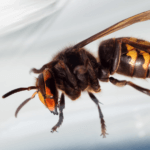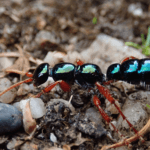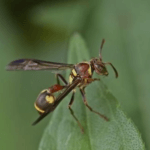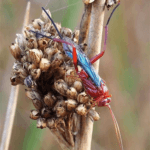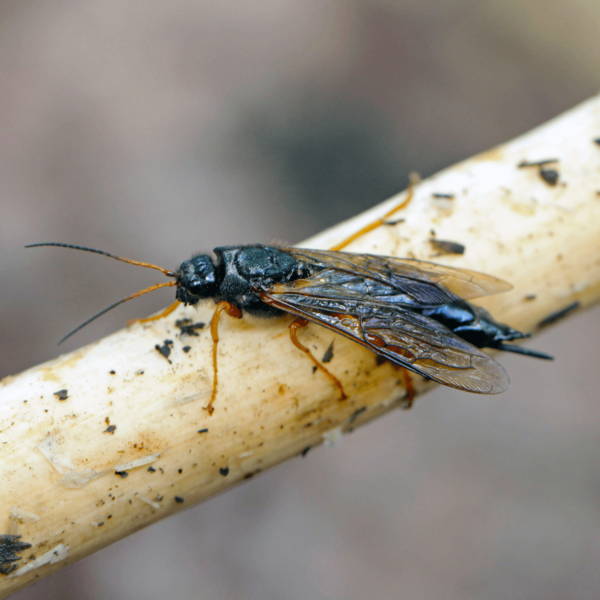
The Sirex Woodwasp: Unraveling the Tale of an Invasive Pest
In the vibrant tapestry of Australia’s biodiversity, the sirex woodwasp (Sirex noctilio) emerges as an unwelcome intruder, a formidable pest that threatens the health and vitality of our pine forests. These large, horntail wasps, with their imposing size and distinctive black and blue markings, have invaded Australia from their native Eurasian range, wreaking havoc on the country’s valuable pine plantations.
Native Invader: Sirex Woodwasp’s Arrival in Australia
The sirex woodwasp’s arrival in Australia dates back to the early 20th century, when it was accidentally introduced through the importation of timber. Since then, it has spread throughout the country’s southern and eastern regions, establishing itself as a significant threat to pine trees.
A Destructive Force: Sirex Woodwasp’s Impact on Pine Trees
The sirex woodwasp’s destructive potential lies in its unique symbiotic relationship with a pathogenic fungus known as Amylostereum chaetophorum. As the female wasp lays her eggs beneath the bark of pine trees, she also injects a toxic mucus and spores of the fungus. This toxic mixture weakens the tree’s defenses, making it susceptible to the fungus, which then decomposes the wood, creating tunnels for the developing wasp larvae to inhabit.
The combined effects of the wasp’s toxic mucus and the fungal infection can lead to the death of the pine tree, particularly in stressed or weakened individuals. In severe infestations, entire pine plantations can be devastated, causing significant economic and ecological damage.
Combating the Threat: Strategies for Sirex Woodwasp Control
In response to the sirex woodwasp threat, various control strategies have been developed. These include:
-
Biological control: The introduction of natural predators or parasites of the sirex woodwasp or the fungal symbiont can help reduce their populations.
-
Silvicultural practices: Maintaining healthy pine forests by implementing practices such as thinning, pruning, and fertilization can reduce the susceptibility of trees to sirex woodwasp attacks.
-
Chemical control: In severe infestations, the use of insecticides may be necessary to control the sirex woodwasp population.
Protecting Our Pine Forests: A Collaborative Effort
The battle against the sirex woodwasp requires a coordinated effort from the government, forest managers, landowners, and the public. By implementing effective control strategies and raising awareness about the threat, we can protect our valuable pine forests and preserve the biodiversity they support.
Our Pest Control Expertise: A Partner in Protecting Australian Pine Forests
As a leading pest control service provider, we are committed to safeguarding Australia’s pine forests from the sirex woodwasp. Our experienced technicians possess the expertise to identify, assess, and control sirex woodwasp infestations, employing environmentally responsible methods that minimize harm to the environment and human health.
If you suspect a sirex woodwasp infestation in your pine trees, contact us immediately for a thorough inspection and expert advice. Our team is dedicated to providing effective pest control solutions that protect your trees and preserve the beauty of Australia’s natural landscapes.



